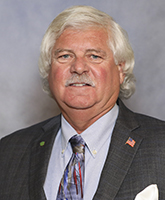
Like many of you, I was drawn to the OSH profession by personal experiences. My family members have been involved in coal mining for generations. My grandfather died in a mining incident before I was born, and my great-grandfather lost his life in a similar incident. In high school and during college, I worked as a construction laborer and ironworker. During graduate school, I taught police and ambulance personnel high-speed driving maneuvers.
Each of those experiences provided unique lessons that I have carried with me throughout my 45-year career in our profession. They also helped me appreciate how many different paths there are into safety and how important building and maintaining a pipeline of qualified safety practitioners is to our profession and our Society. I would like to briefly highlight just a few of those paths.
One common way into our field is to obtain a degree in safety or a related field. Academic programs are an important part of our profession’s pipeline. Through our work with organizations such as ABET and AIHA, we have long supported and helped define the standards used to accredit safety-related degree programs. While not all degree programs pursue ABET accreditation, this work is an important part of ASSP’s efforts to support the development of future professionals.
Emerging professionals bring new perspectives, ideas and energy into our workplaces. Each of us can serve as a resource to help them develop additional knowledge and skills and encourage them to pursue continuing education and professional certification. Throughout my career, I have enjoyed mentoring emerging professionals and helping them advance in their careers and develop into future ASSP leaders. If your chapter has a student section or members who are new to safety, please reach out and talk with them about your career, share lessons learned, provide support and help them understand what it is like to work in the safety profession.
We also know that individuals with backgrounds in the military, the trades, business, education and engineering have skills that can help them become effective safety professionals. I have long advocated for veterans to consider workplace safety as a second career. Their experience with leadership, teamwork, risk assessment, communication and problem-solving align well with the safety profession. The trades are another potential source of future safety professionals. Tradespeople have firsthand knowledge and real-world experience performing work safely in a wide range of work environments.
There are now many avenues through which those considering a career change can build their knowledge and prepare for roles in the safety field. This ranges from completing a community college program to enrolling in a 4-year degree program to pursuing a professional credential such as the ASP, CSP, SMS, CHST or OHST certification.
I also believe ASSP’s commitment to diversity, equity and inclusion enhances our ability to attract a greater number of traditional students looking for a rewarding career while also appealing to those considering a transition from other careers. Over time, this will allow our profession to better reflect the makeup of the diverse workforces we serve, which will help our organizations create inclusive cultures that enhance worker well-being and improve overall organizational performance.
Across the many different paths into safety, the ASSP Foundation plays a vital role in promoting our profession as a rewarding career choice. It has invested more than $5 million into the OSH community and continues to develop opportunities designed to attract new individuals to the profession, as well as enhance the knowledge and skills of current safety students and practitioners. Please consider donating to the ASSP Foundation to demonstrate your support for the future of our profession. You can learn more at https://foundation.assp.org.
I cannot imagine being anything other than a safety professional. This profession is incredibly rewarding and continues to provide me so much. Whatever path brought you here, I hope you feel the same way.